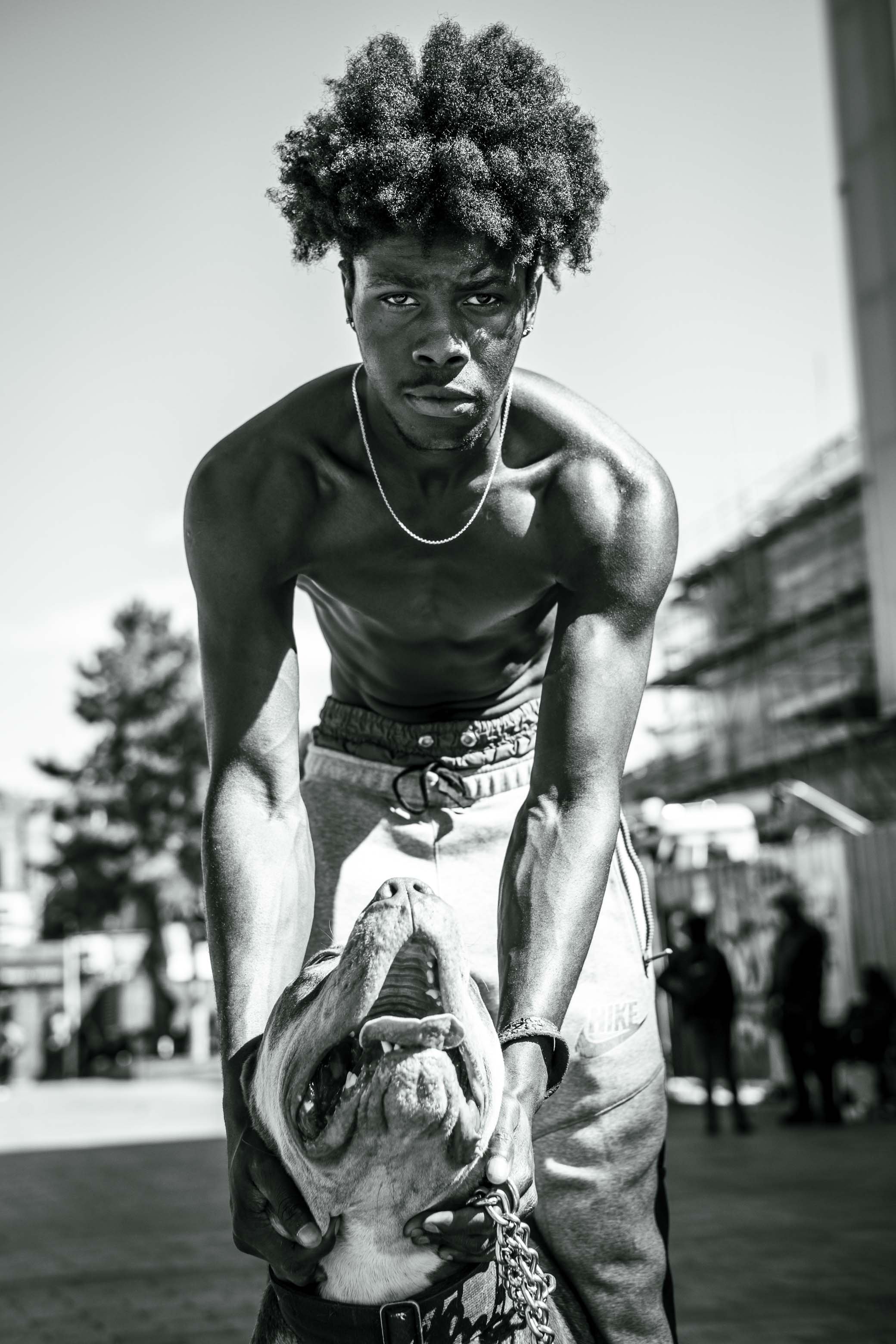Gillet Square Stories
A celebration of one of Hackney’s most iconic and radical public spaces
Red Cross Building, Gillett Square, Dalston
January 2023 – June 2026
This powerful long-running street gallery explored the history, culture, and community of Gillett Square through striking portraiture, street photography, and audio stories. Created with residents, artists, and grassroots groups, it captured the square’s spirit as a vital space for resistance and creativity. Installed outside the Red Cross building in Dalston, hundreds of visitors have experienced the work, alongside talks, screenings, and community events that have brought the square’s past and future into dialogue.
Future Hackney return with their third and distinctly different street exhibition, about one of Dalston’s remaining working class neighbourhoods. They combine documentary and co-authorship to create a hybrid genre of photographic storytelling. Gillett Square is a space of radical history through the black experience. This is a living archive of memories, experiences and stories, connecting past and present.
The street exhibition was shown for three years at Red Cross, 92 Dalston Lane, London E8 1NG
Supported by National Lottery Community & Heritage Funds, Hackney Council, Hackney Co-operative Developments, The Weavers Company, London Unseen (Mayor of London's Commission for Diversity in the Public Realm) and NTS Radio.
Click on each image to read the oral histories
Photo: Wayne Crichlow
The images and stories we co-author are united through participants connections to Gillet Square and Ridley Road in Dalston. Their life stories unite though shared histories that include diaspora, national borders, The Black Atlantic, double consciousness, Pan Africanism and Post Colonialism. The intergenerational stories include histories of personal struggle, such as mental health, the foster care system, gender norms, structural and institutional racism and sexism as experienced by the individual.
“I came to the UK a year ago from Monserrate, a small Island in the Caribbean. I walk my friend’s dog Cabanna and get to chat to people in the square. I used to look after dogs back home so this gives me a sense of belonging.” Joshua
Photo: Don Travis
Future Hackney are reinventing documentary through continuous engagement and street workshops with young people and intergenerational groups. People are included and encouraged to share their stories and images in their own way.
“At the age of eleven I carried a handgun. A magnum, which my bredrin’s gave me to me to protect mum and the cousins. I never used it and never wanted to, but I was the one who had that responsibility, as dad had left. Growing up in Waterhouse ghetto was tough love, so at the age of 19 I arrived in a bitterly cold London and got my first job on Ridley Road.” Half Pint
“I blew up in music when I was 21 years old, with my music partner at the time. We were the first two females to pass three million views in drill music, so we made history and trended. Drill music originated in southside Chicago depicting the areas challenging environment. I like to talk about issues that affect women including colourism and abuse.” Abigail Ashante
“I’m dead against stop and search.. it's counterproductive to the community. I’ve been stopped and searched around 60 times in my life. Certain ideologies that were created during colonialism were used to negate black people who are still struggling with those labels.” Clapper Priest
Photo: Wayne Crichlow
Dalston was like a magnet for the black and working-class communities back in the 80’s with shebeens and parties weekly. Many of these communities found refuge in the area with venues like the Four Aces, Centerprise and Cubies.
Photo: Don Travis
Gillett Square is a microcosm, of a growing global trend that could be interpreted as the “managed decline” of a historically ethnic and working-class space.
Photo: Don Travis
Gillett Square has a complex past of black and working-class history, police brutality, structural racism. However, in recent years it has become a vibrant space with regular events and young voices. NTS Radio and Albion HiFi alongside other music organisations hold events there.
“The first time I experienced racism was at Notting Hill Carnival. It was 1977 and there was a lot of tension in the air. Something kicked off and the police grabbed me and pushed me up against a van. I could hear people shouting “let him go he’s just a kid”. First one or two, then it sounded like fifty people. They backed off and I went my own way. This was my first understanding of the power of community.” Keyo
Photo: Don Travis
Gillett Square has always been a space for music lovers, artists, writers, drifters, kids, cool people and those who like to shine.
“My story goes from care home, to street, to prison. People get paid to foster and sadly many of them to it for the money, not because they love troubled children. I never got hugs or much love, so I wasn’t ever sure what that kind of love actually was? I never got birthday cakes or celebrated with people. I would like to raise awareness of the care system and how much neglect there is. Sometimes in life you don’t get to choose what you do, how you make a living or how you survive. If I had a choice I would have been a posh kid and lived the good life and gone to university and got something out of life, the right guidance, the right support and the right mentors.” Tony
Photo: Wayne Crichlow
Future Hackney aims to make art and photography inclusive, removing it from the traditional white box and onto the streets where it becomes part of the fabric of the city.
Photo: Wayne Crichlow
“Growing up locally we understood the relevance of the Gillett Square as a place where stories can be told, shared, documented and preserved as part of London’s history”. Wayne Crichlow and Don Travis.
Photo: Don Travis
“I became addicted to heroin about two years ago and I am trying to get out of it. Addiction is about pain not drugs. People in Dalston look out for me and understand why I am going through this.” Dillon
“I’m a local music artist who produces and writes all my own work. My music is a range of genres and I spit my own lyrics. Really was it was grime music to begin with. Grime music really resonated with me because it embodied a lot of the anger and confusion that I was going through. I've worked with JME, Boy Better Know, Skepta and Wiley. But in this right now, I'm just trying to do it by myself.” SBK
















